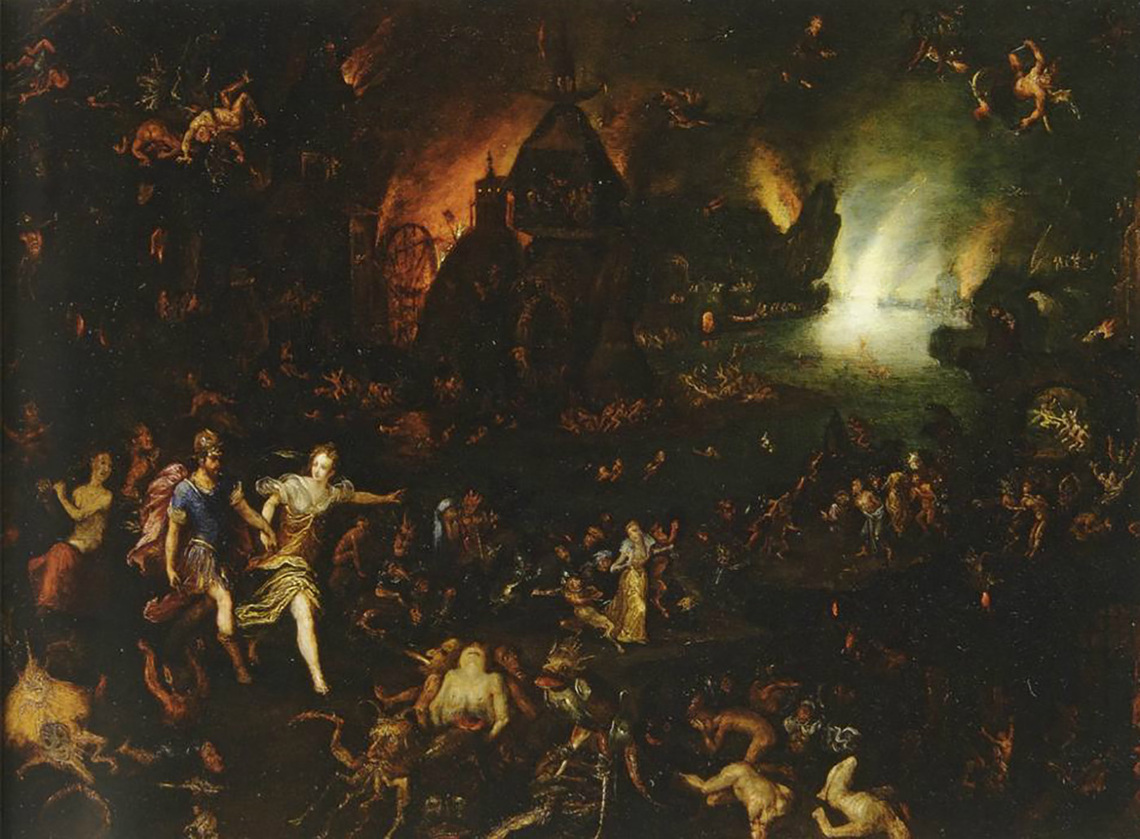Aeneas and Sibyl in the Underworld (Amsterdam)
| Object type | Painting |
| Genre | Classical Mythology |
| Date | ca. 1596 |
| Dimensions | 25.5 x 34.3 cm |
| Support | Copper |
| Medium | Oil |
| Our attribution | Produced in Jan Brueghel's Studio |
| Other authorities | Ertz 2008-10, #334 as Jan and studio |
| Location/Most Recent Sale | Amsterdam, Salomon Lillian Gallery |
| Tags | Fire, Nude, Demons, Hell/Underworld, Classical, History, Mythological |






This is a variant of the Colonna version. However, when I compare the two main figures in this work to those in the Colonna work, these are just much less well done. Moreover, this entire painting is spatially and conceptually inferior, confused and incoherent. And yet -- this is an independent composition, not just a copy by any means; so if Jan didn't do it, who did? Surely he did not have a studio in Rome that was putting together works in this way. So how to explain it?
This painting bridges the gap between the Colonna picture and the rest of the Aeneas and Sibyl pictures because it's starting to have some nude figures (specific ones that are repeated in other Aeneas scenes) but it also has the torture wheel and other Boschian stuff. When Lilian had this picture he also had, as a pendant to this, an Aeneas Saving Anchises which was dated 1593 (a date that I doubt). There is no reason that they must have been pendants originally: the two could have been brought together at any time, since almost all of Jan's works from this period are on same-sized copper plates. No Roman patron is recorded as owning both of Brueghel's subjects from the Aeneid, although that would have been perfectly logical .